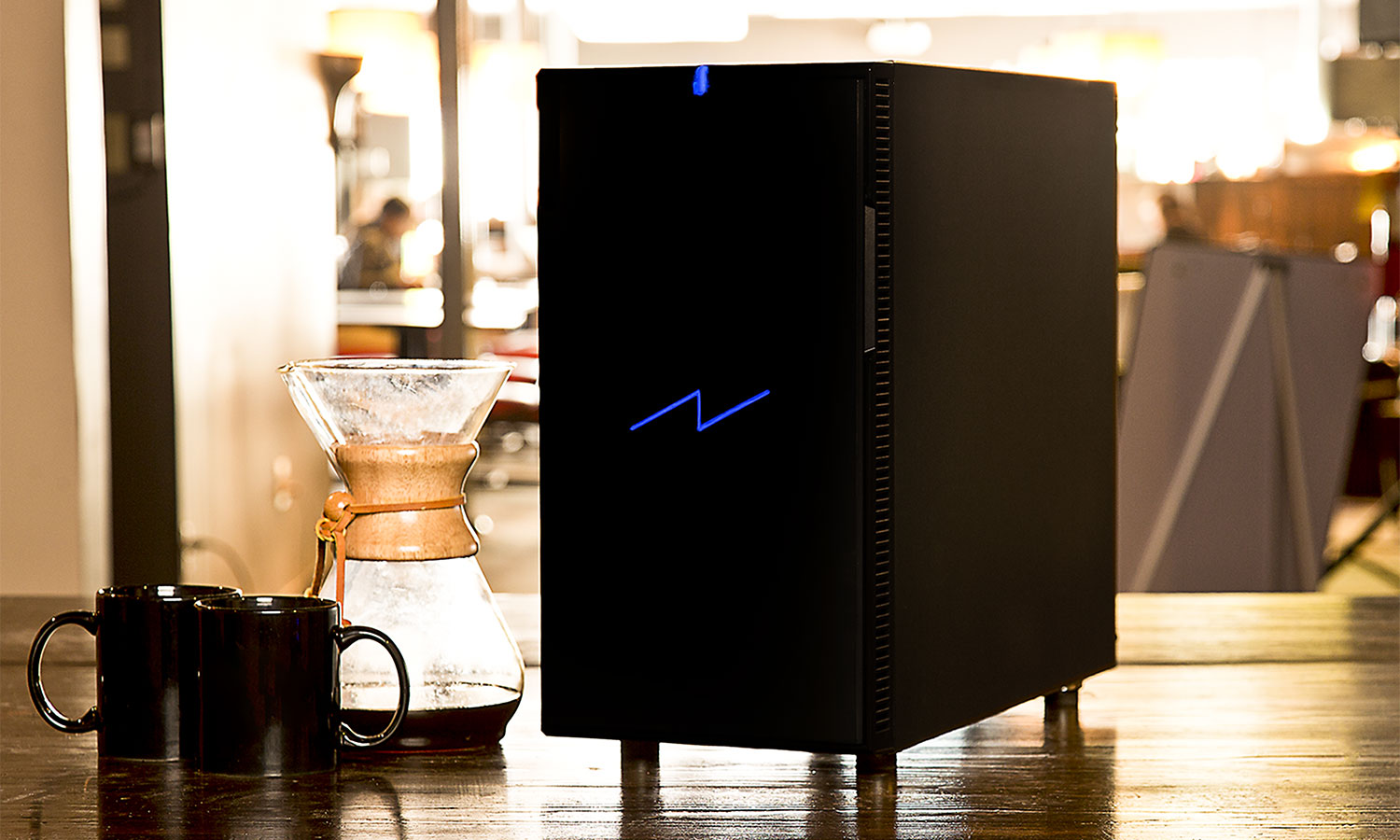Tom's Guide Verdict
The Volta VZ desktop hides serious gaming power beneath an unassuming, easy-to-upgrade design.
Pros
- +
Easy upgradability
- +
Strong overall performance
- +
VR-ready graphics muscle
Cons
- -
Fairly plain and bulky
- -
Little aesthetic customization
Why you can trust Tom's Guide
Some gaming PCs aim to wow you with their flashing lights and aggressive designs, while others are content to let their performance do the talking. Computer Direct Outlet's Volta VZ desktop ($1,442 starting, $3,069 as reviewed) falls into the latter camp, offering a simple, no-nonsense chassis that you can stuff a whole lot of power into. The Volta might not turn heads like many of its competitors do, but it's practical, easy-to-upgrade design and beefy gaming performance make it a strong choice for those seeking a gaming desktop that won't look out of place in the office.
Design
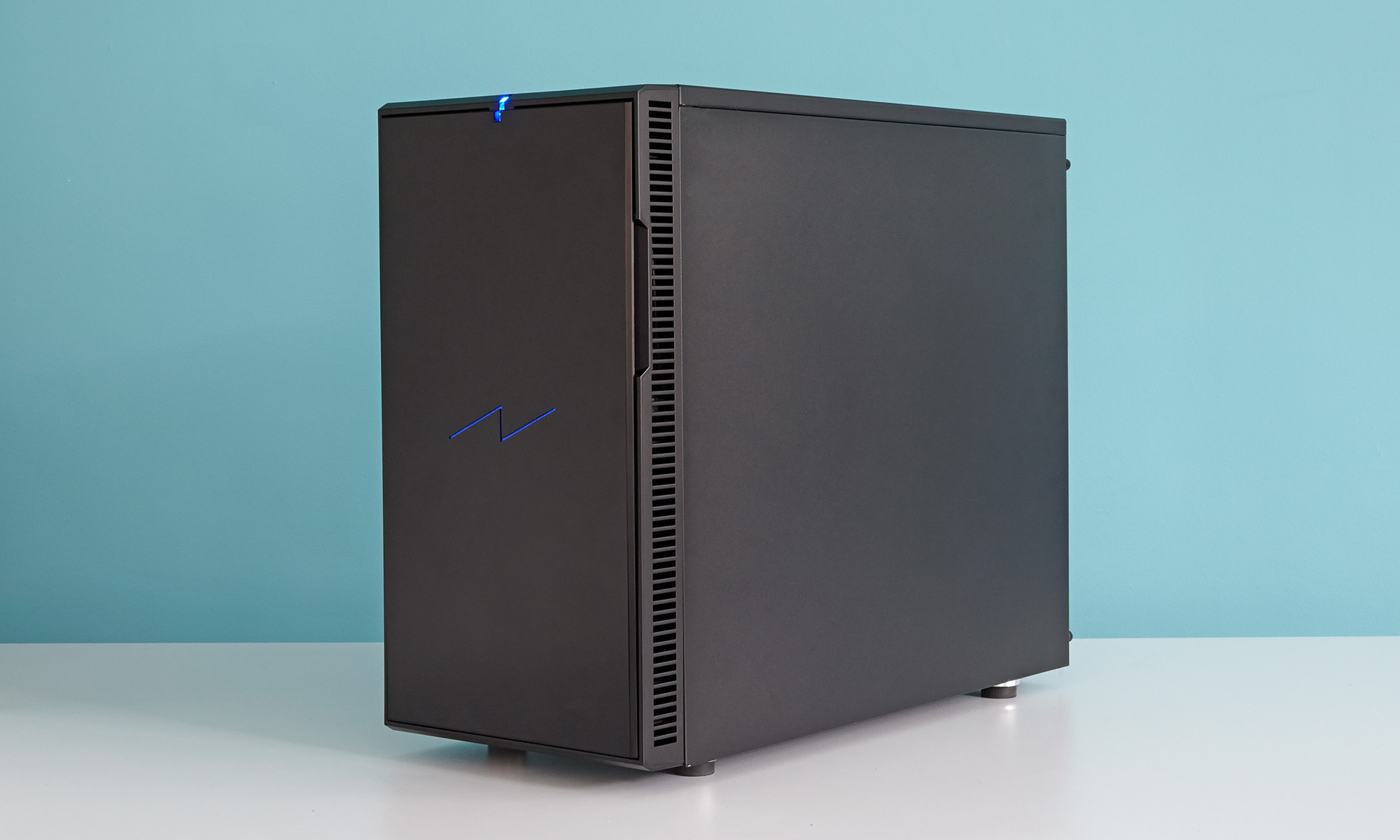
The Volta VZ keeps things simple yet classy, utilizing a sturdy and rectangular Fractal Define Mini case coated in slick black automotive paint (CDO also offers an option for red paint in the front). The only added pieces of flair are the two lighting-bolt-shaped Volta logos on the side and front panels, the latter of which lights up blue when the PC is turned on.
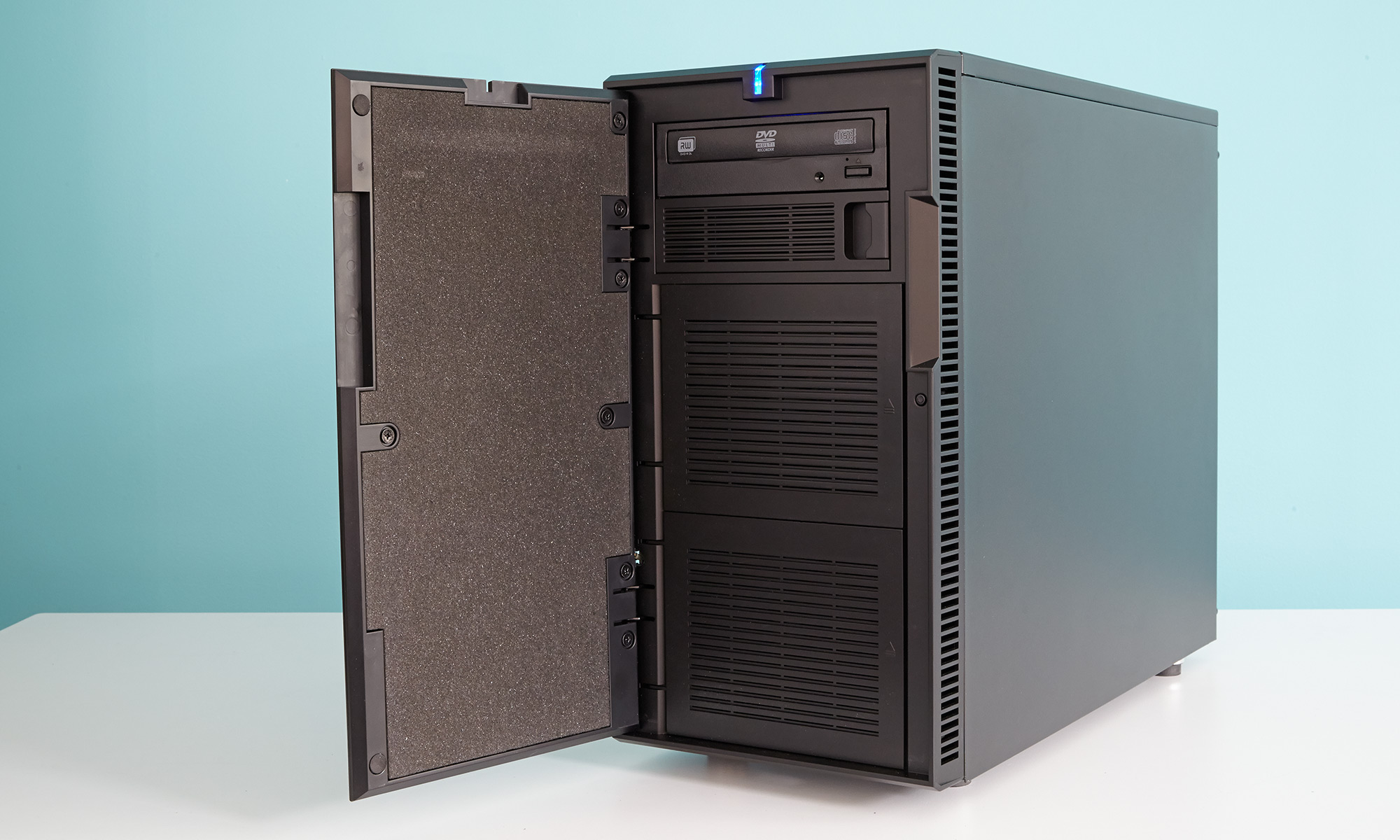
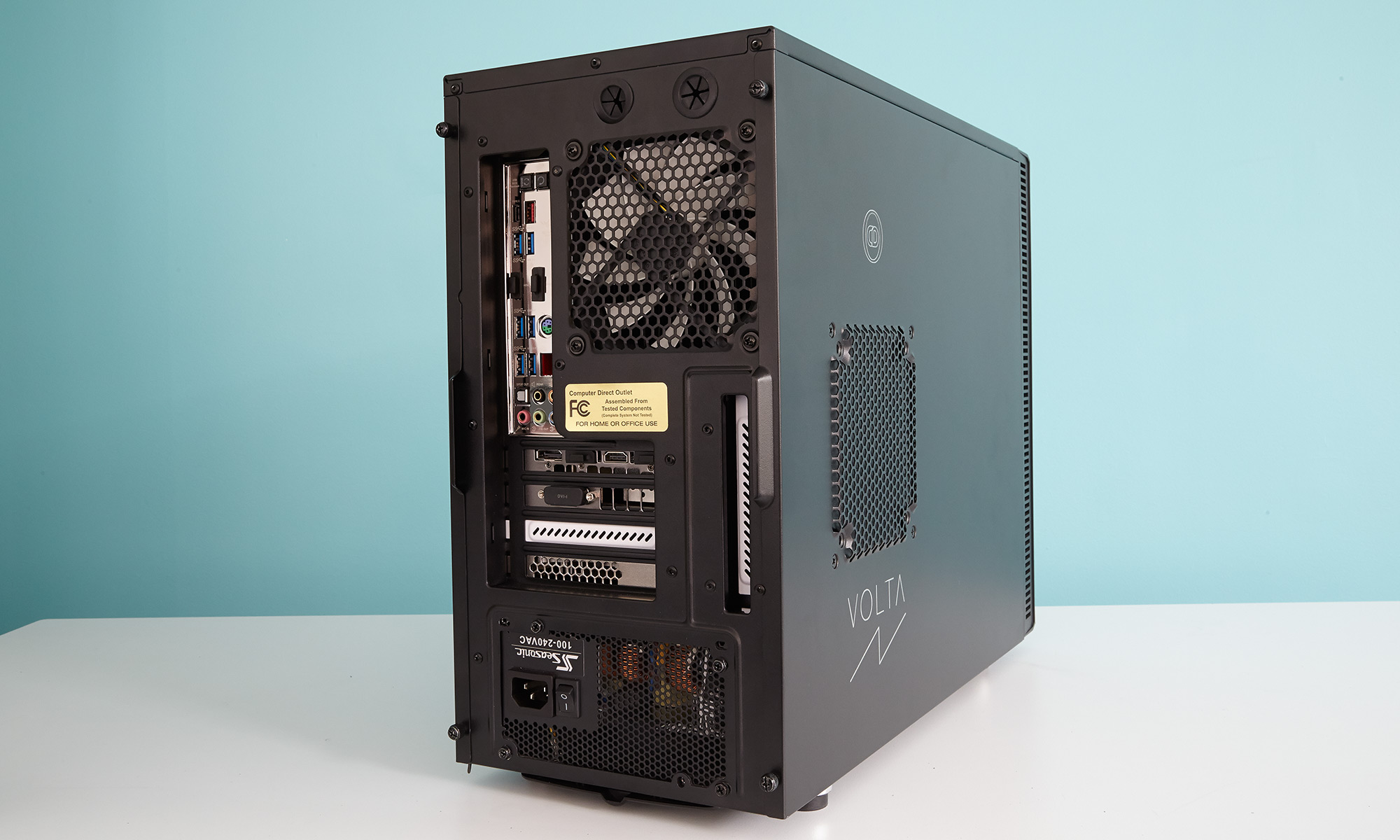
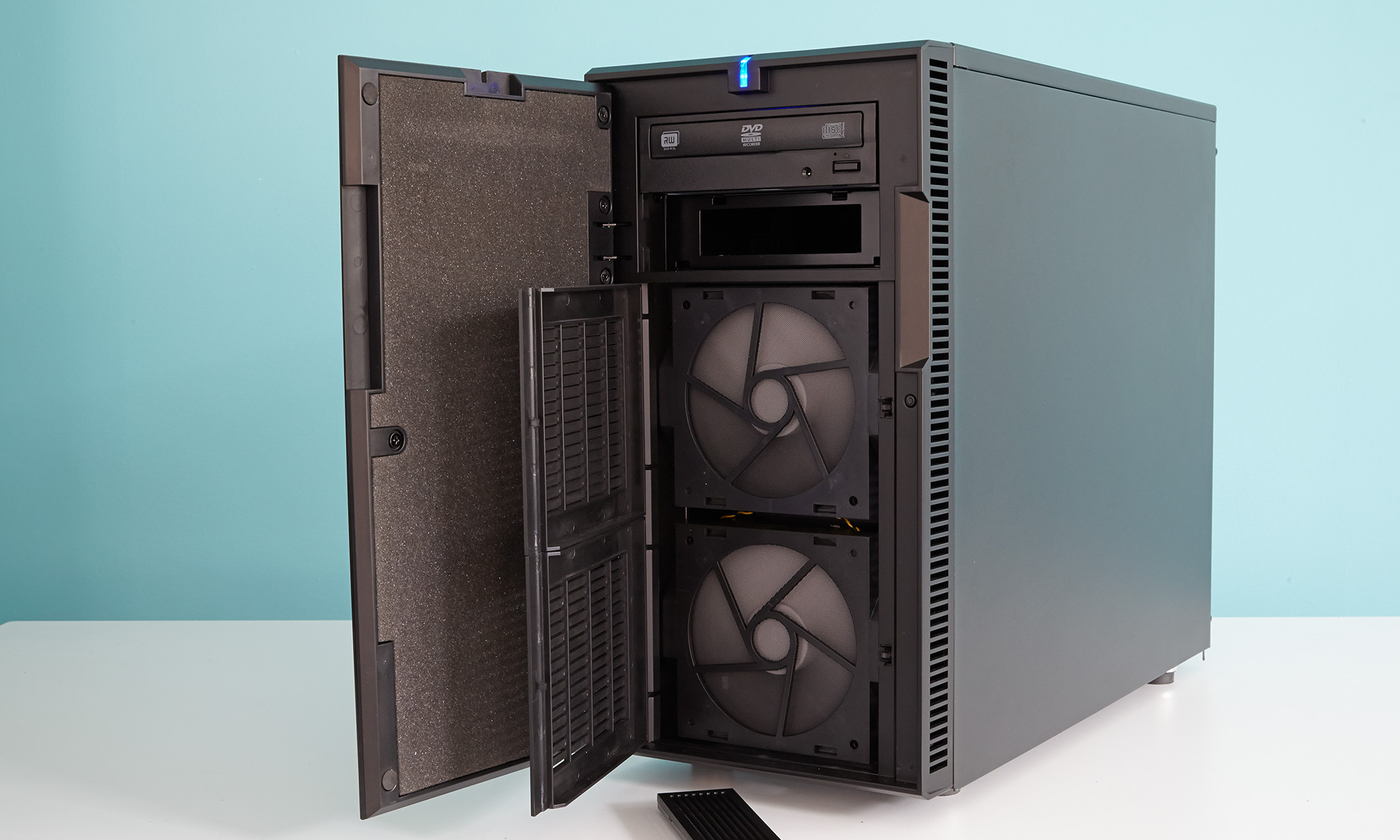
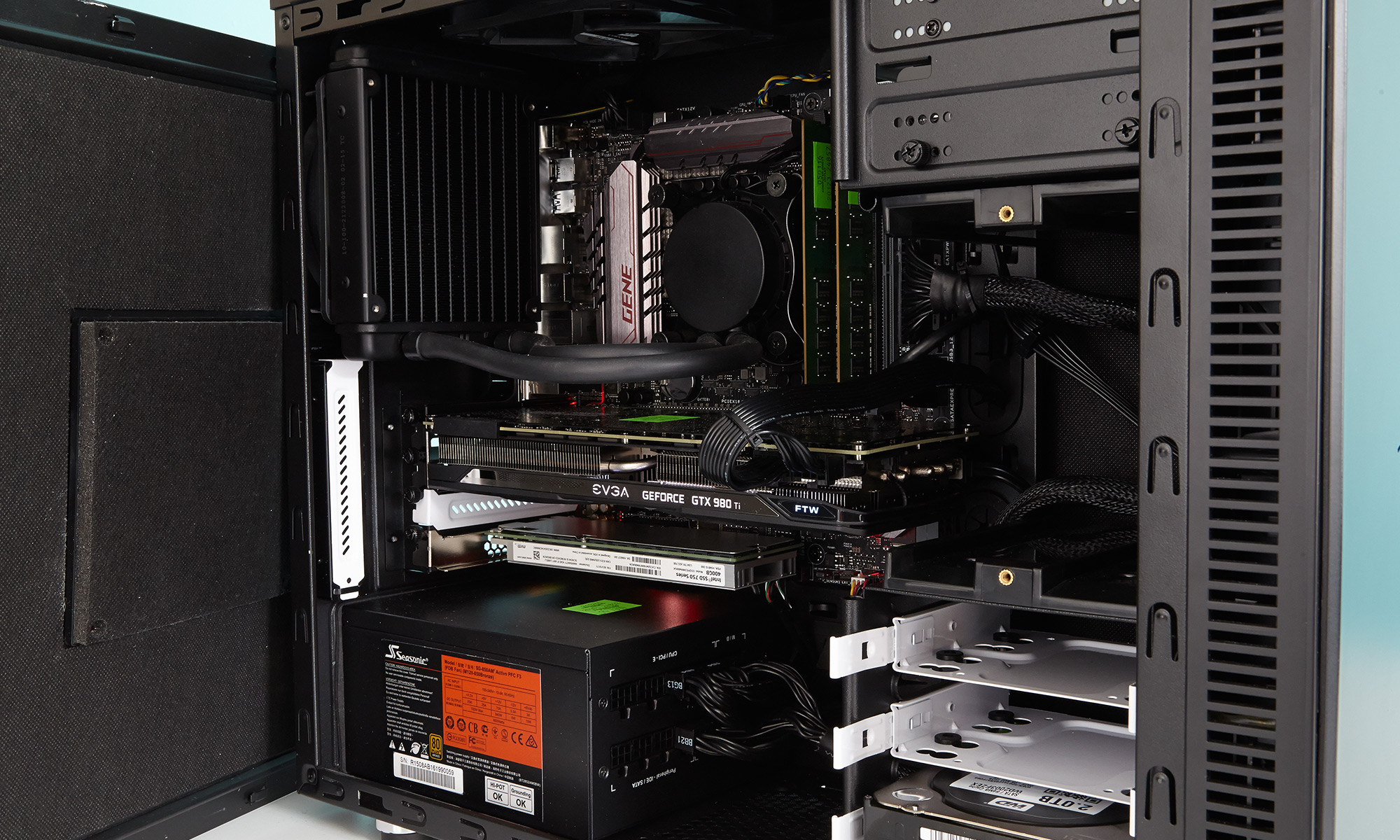
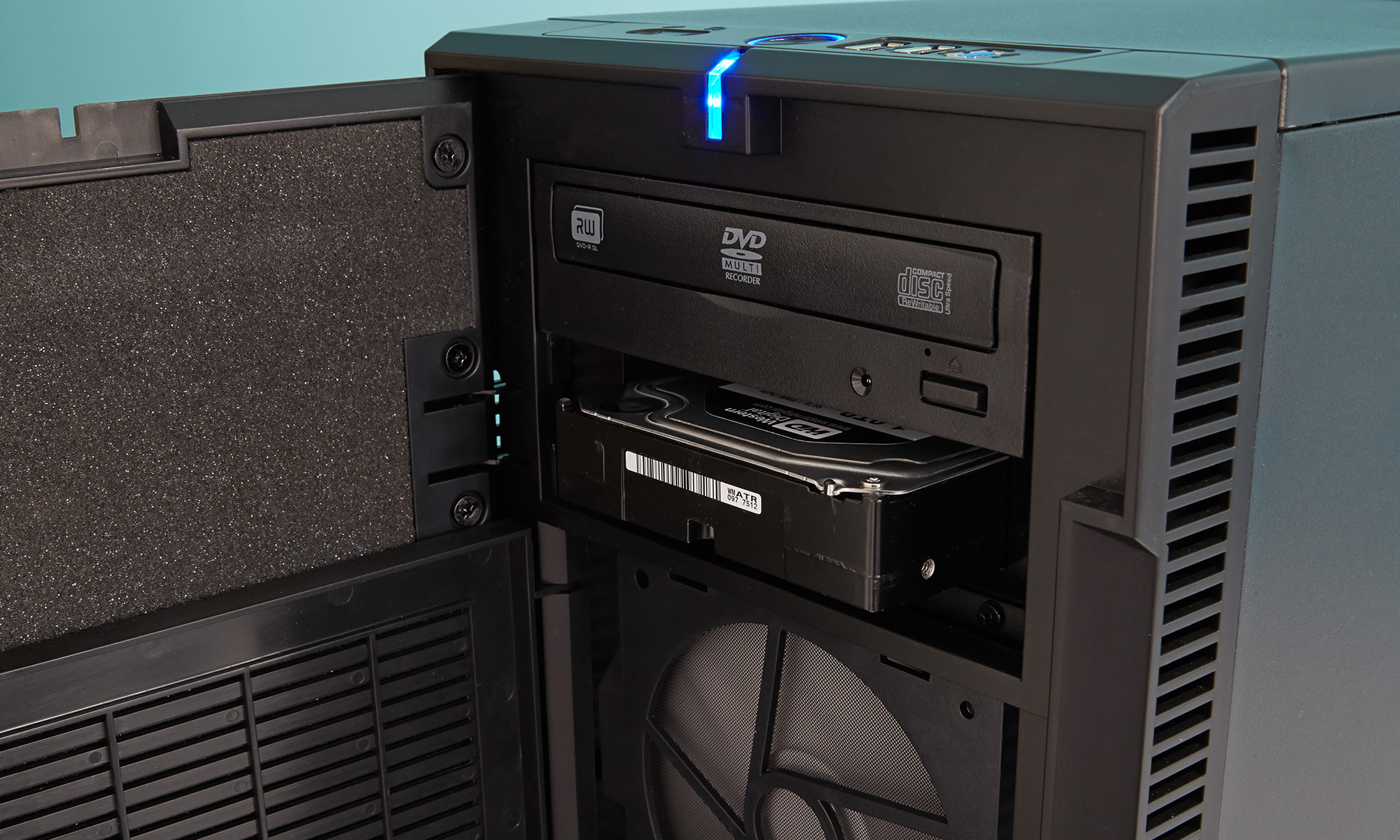
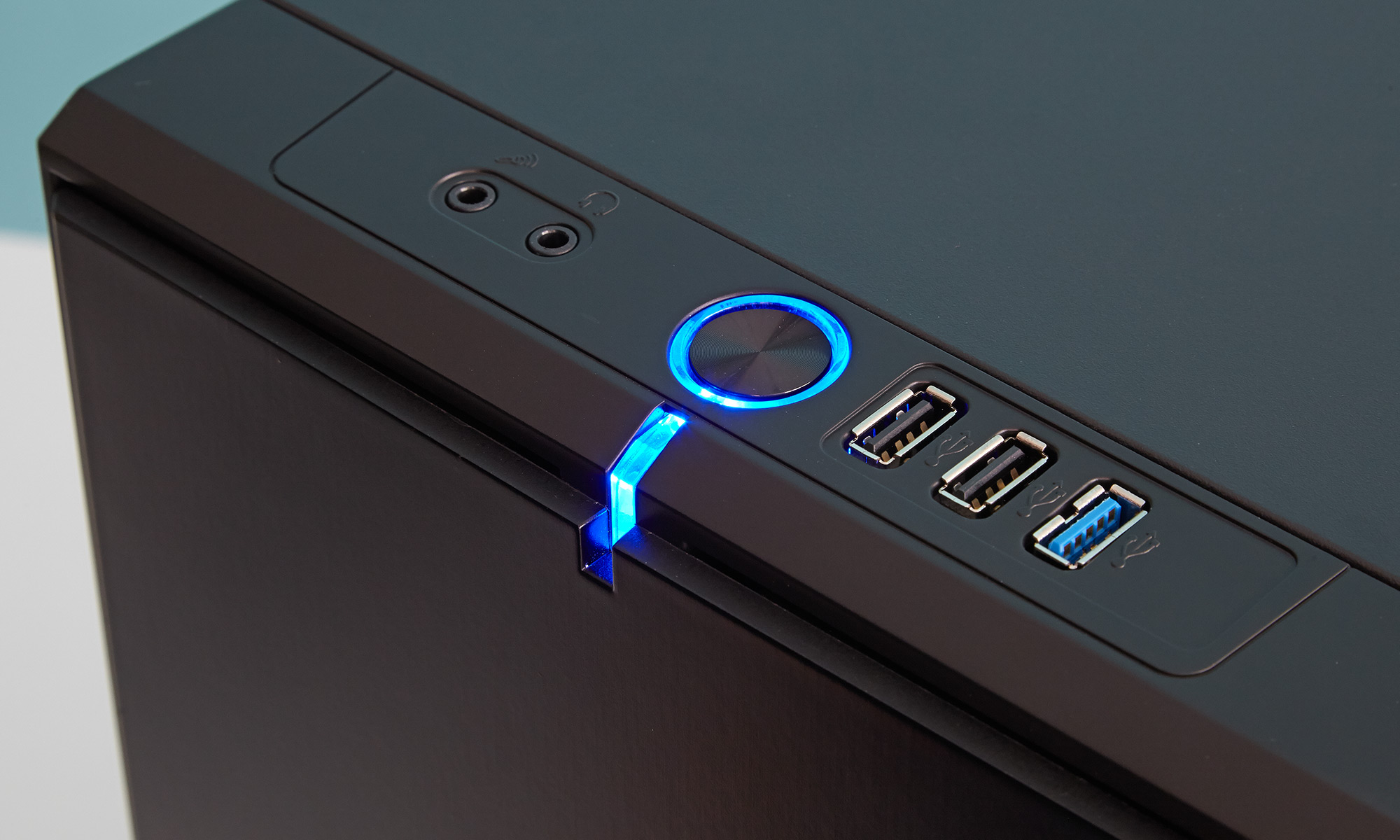
The Volta's front panel opens up like a mini-fridge, revealing a DVD-RW drive, an optional hard-drive bay and two pop-open doors that let you access the PC's front-facing fans.
At 19.3 x 15.6 x 8.27 inches, the Volta is a good fit for those with a decent amount of floor or desk space. It's not as hulking as other premium towers such as the Origin Millennium or Alienware Area 51, but it also won't slide into your entertainment center like a Maingear Drift or Alienware X51. The Volta is about on par with Velocity's Micro Raptor Z55 (18.9 x 17.8 x 7.25 inches) in terms of shape and size.
MORE: The Best Gaming Desktops Available Now
Ports and Interface
The Volta offers plenty of convenient connections, starting with the two USB 2.0 ports, a single USB 3.0 port, and headphone and mic jacks at the front of the top panel.

In the back, you'll find an additional six USB 3.0 ports, a USB 3.1 port and a USB Type-C port for extrafast charging on supported devices. You'll also find a PS/2 port for older mice and keyboards, an Ethernet jack, and a full suite of surround-sound audio connections.

The Volta's Fractal case makes upgrading incredibly painless. After twisting off a few hand screws, I was able to slide off both of the side panels to gain access to components, such as the graphics card and storage drives. From there, you'll just need to remove a few screws with a screwdriver, depending on what you're replacing.
Gaming Performance
Packing an Nvidia GeForce GTX 980 Ti graphics card with 6GB of VRAM, our Volta unit is a legitimate gaming powerhouse. The PC showed off just how good Rise of the Tomb Raider can look, allowing me to perform death-defying leaps through its gorgeously lit canyons in 4K at high settings with frame rates ranging from 45 to 60 frames per second. When I lowered the resolution to 2560 x 1440, I was treated to a consistent 60 fps.
MORE: The Best Gaming Laptops
This lines up well with how the Volta performed on the game's built-in benchmark. CDO's desktop netted an average frame rate of 43.16 fps at 4K with graphics maxed out, and improved to 59.20 fps with the resolution set to 2560 x 1440.
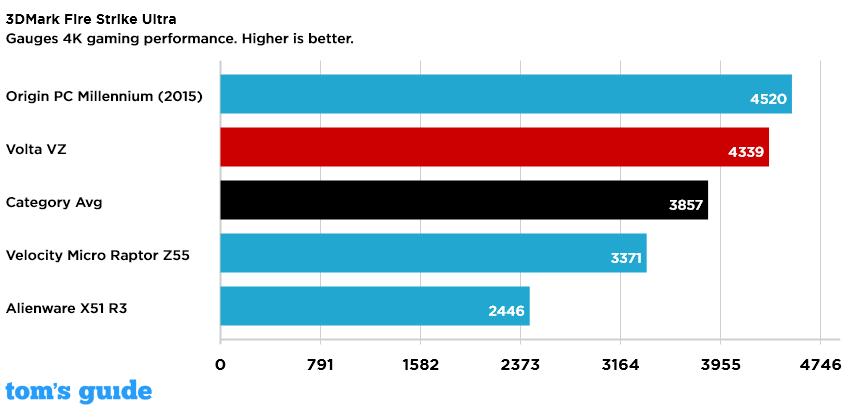
The Volta scored a 4,339 on the 3DMark Fire Strike Ultra test, which gauges 4K gaming performance. That tops our GTX 980-powered Velocity Micro Raptor Z55 (3,371), as well as our 3,857 category average.
VR-Readiness
Thanks to its top-of-the-line specs, our Volta is more than ready for virtual reality gaming. The PC crushed the SteamVR performance test, which runs a quick Portal-themed demo and rates a machine on a spectrum of Not Ready (Red), Capable (Yellow) and Ready (Green). The Volta landed as far into the green as possible, with an average quality rating of 11. To put that number in perspective, GTX 970-powered machines such as the Alienware X51 and Asus ROG G20CB scored closer to 6.
Just to be safe, I also ran the Oculus Rift Compatibility tool, which scans your PC to ensure you have the proper components and ports for the Rift. Unsurprisingly, the Volta checked off all of the necessary boxes.
Overall Performance
Packing an Intel Core i7-6700K processor with 16GB of RAM, the Volta had plenty of muscle to support whichever combination of tasks I threw at it when I wasn't gaming. I never experienced slowdown on the PC, even as I watched five Twitch streams, downloaded a game from Steam and ran a full-system scan all at once.
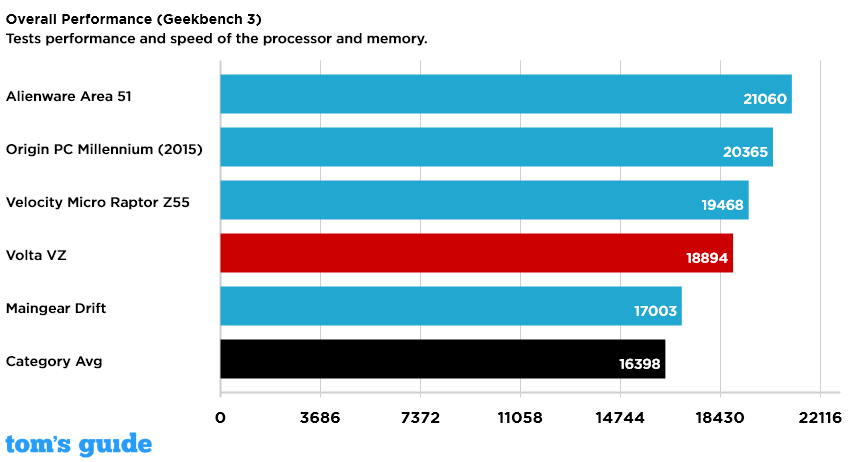
The Volta scored a 18,894 on the Geekbench 3 overall performance test, topping the Core i7-6700K-powered Maingear Drift (17,003) and our 16,398 category average while falling to the Raptor Z55 19,468, which uses the same CPU as the Drift.
MORE: Our Favorite Gaming Keyboards
Our Volta's 400GB PCIe SSD copied a large batch of multimedia files at an insanely fast 497 MB per second. That's faster than the Drift's dual 250GB SSDs (363.5 MBps) and our 250-MBps average, though not quite as blistering as the Raptor's 400GB Intel 750 NVMe flash drive (1,107 MBps).
Configurations and Value
We reviewed a high-end, $3,069 configuration of the Volta, which packs an Intel Core i7-6700K processor, 16GB of RAM, a 2TB, 7,200-rpm hard drive with a 400GB SSD and an Nvidia GeForce GTX 980 Ti graphics card.

Of course, the Volta is a made-to-order machine, and you don't have to dish out over $3,000 to get your hands on one. You can create a configuration that's as low as $1,442, which gets you an Intel Core i5-6500 processor, 8GB of RAM, a 500GB hard drive and an AMD Radeon R360 graphics card. You can also go totally overboard, adding as much as 64GB of RAM ($338 extra), a 1.2TB SSD ($1,230) and up to two Nvidia GTX Titan X GPUs ($2,539 extra).
Building a VR-ready Volta would cost around $1,748, which ups the graphics card to an Nvidia GTX 970 — the minimum for virtual reality gaming. A VR-ready Origin PC Millennium will run you about $1,870.
While we reviewed the all-black Volta with blue accents, you can also opt for a case with a bright-red front panel and white backlights. The PC ships with a lifetime service and a one-year parts and labor warranty, which you can extend to up to three years for $339.
MORE: The Best PC Games to Play Right Now
The Volta's pricing seems about standard for a boutique manufacturer. An Origin PC Millennium with the same CPU, RAM, storage and graphics costs about $40 more, at $3,112. On the other hand, PC makers such as Origin and Maingear offer a greater number of aesthetic-customization options at the point of purchase.
Bottom Line
Computer Direct Outlet's Volta VZ ($1,442 starting, $3,069 as reviewed) looks unassuming, but its performance is as impressive as that of any PC I've reviewed in this price range. CDO offers plenty of options for making your Volta VR-ready and then some, and while the PC's design is plain, it's also a breeze to upgrade.
If you want something more visually stimulating, both the Origin Millennium ($1,731 starting) and Maingear Shift ($2,278 starting) offer striking designs with tons of aesthetic-customization options. But if you'd rather have your gaming PC blend unassumingly into your workspace, the Volta has the performance that counts.
Mike Andronico is Senior Writer at CNNUnderscored. He was formerly Managing Editor at Tom's Guide, where he wrote extensively on gaming, as well as running the show on the news front. When not at work, you can usually catch him playing Street Fighter, devouring Twitch streams and trying to convince people that Hawkeye is the best Avenger.
